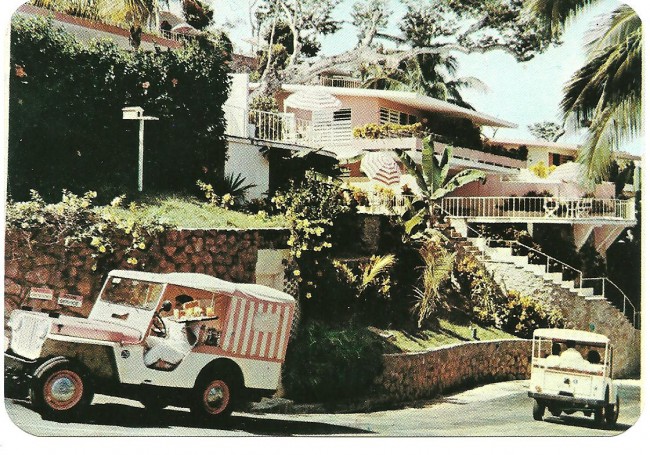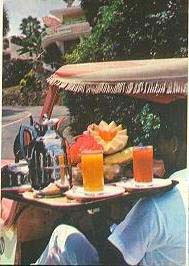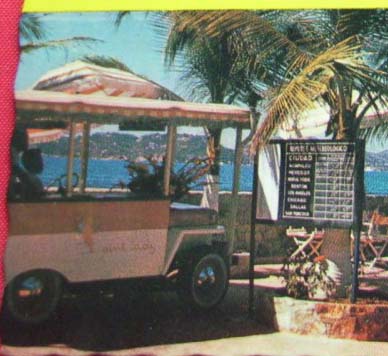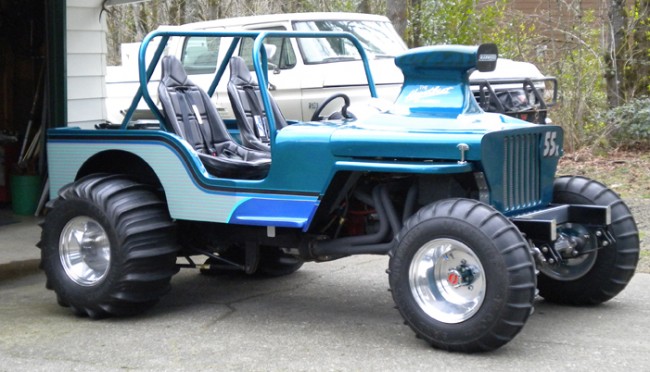This is a post I have wanted to publish for a while and finally got to drafting it last night. I have a lot of good memories of Playdays. One of my most powerful memories was a trip to Pendleton, Oregon, for Summer Convention 1975 (I think that was the year). It was located in the middle of a clearing in a forest: no buildings, just dirt, grass and trees. I was 10 and pal’d around with Tim and Steve Carter for most of the weekend. We were kids in a candy store, wandering around and through the various camp ‘cities’, made up of campers and tents and people and jeeps, meeting other kids and having a blast. There were an endless stream of club names and club stickers (on the side of the jeeps) that I’d never seen before. It truly was a different world …
Most of the images below came from the WWJC Scrapbook I borrowed a couple weeks ago. Because the book was too big to fit on my parent’s scanner, I had to snap photos of them, which explains some of the low quality.
It’s fair to call this a sampling of events, as I hardly went to all playdays. Feel free to comment on any I’m forgetting and I’ll add them to the post.
We’ll start out with this article in a newspaper about Jeep Racing from the mid 70s. I have to say I was a little surprised at the ‘retarded’ comment, which just highlights how fast language can change.
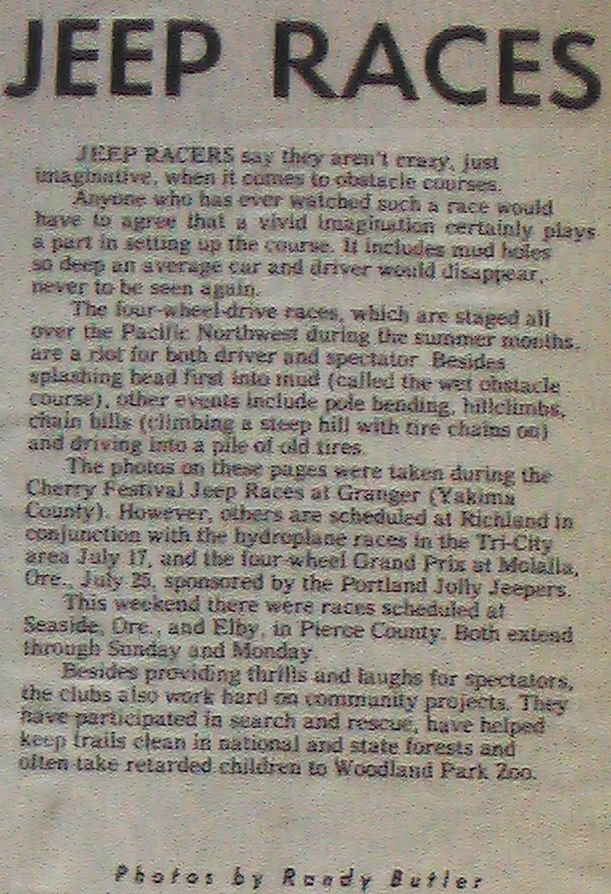
Jeep Stuffing: For the first event, let’s highlight this this oddball contest. Here’s Al “Ham” Hamilton in his old jeep Gypsy B. He and his Wife Barb were founders and deeply involved in the WWJC and the PNW4WA for many years. The remainder of the people piled on to this jeep appear to be WWJC members as well.
I couldn’t say how this was judged, but it reminds me of the Yipao events in Columbia where they stuff CJ-3Bs with just about everything.

Barrels: Here’s Al again. This is a classic event that still endures. Inspired by the barrel racing event you’d find at horse races, barrels were positioned in a triangle. The racer starts at a gate, circles around each as fast as they can, then heads back to the gate.
The Gypsy B was Ham’s road/race/trail jeep. As you can see, Ham didn’t even bother to take off the winch. He even scored some trophies in his jeep (well, at least one big trophy according to the scrapbook).
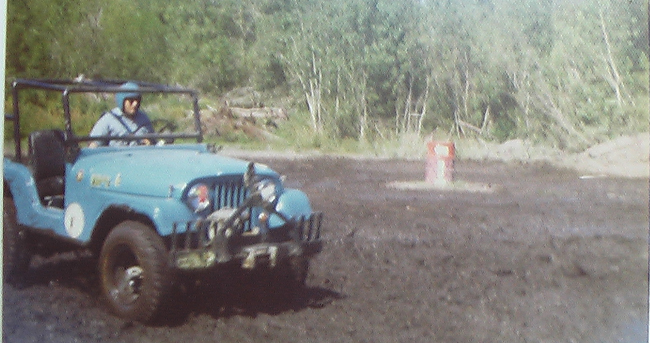
Potato Stab: In the Potato Stab, a racer races around a track and stops at each box of potatoes to allow the passenger to stab a potato, put it in a sack, and race onward. The fastest time won. There were variations of this event. One variation involved popping balloons instead of picking up potatoes.
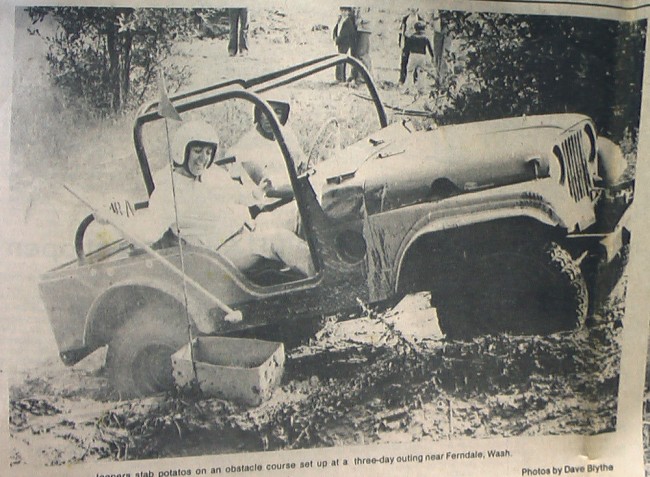
Balloon Throws: This was just for fun. Two jeeps would pass each other and water balloons were thrown. I *think* this picture was taken at the Beverly Sand Dunes in Washington (near Vantage). In the CJ-5 is my mother driving and my sister riding shotgun, probably in the late 70s. This is Dad’s post rollover Jeep, note the cage has 4 loops with two in the middle. It’s the kind of cage you install in your jeep after you’ve rolled down a hill 5 times.
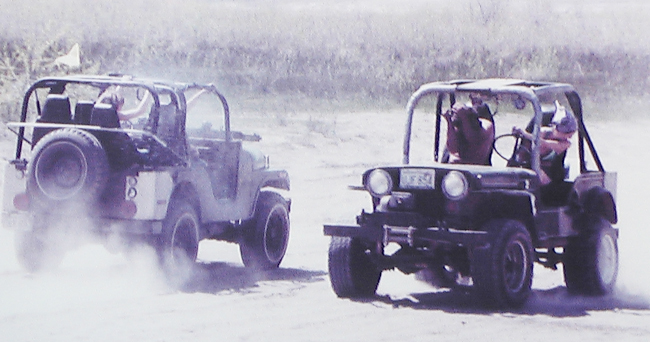
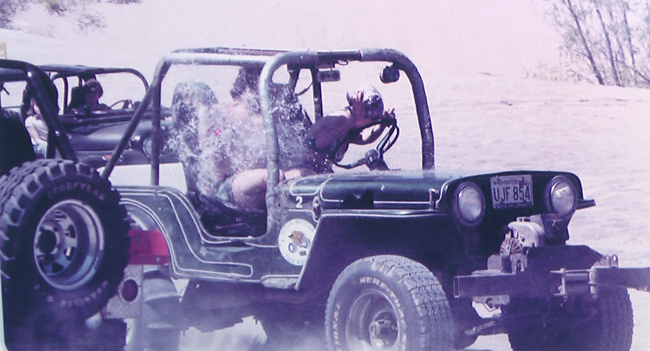
Balance Beam: The balance beam is pretty self explanatory. Again, this is my mom and sister (which is kind of weird, because I do not remember my sister or mother ever doing any of this). The object was to balance as quickly as you could. This had to be around 1973 — in other words, this is the pre-rollover jeep. I’m not sure why the side of the body on this jeep is so beaten up. I’ll have to ask Dad if he remembers why that is, though I suspect he might say something like “cuz your mom drove it” 🙂
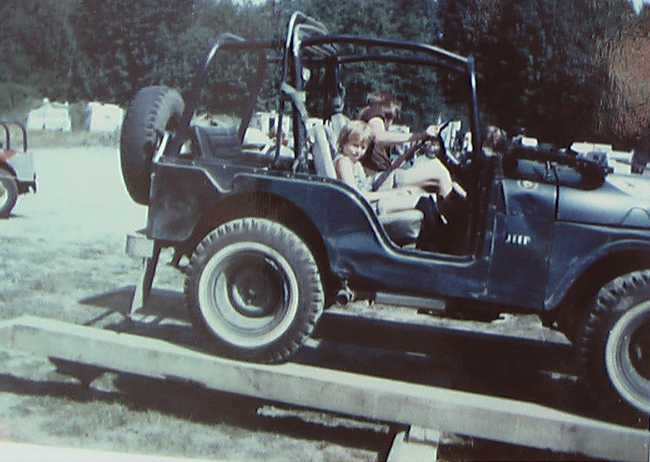
Balloon Pop: In this event, a child drives a course and stops at a special spot. Once stopped, the child jumps out, runs to the balloon, pops it, runs back to the jeep, and completes the course. This jeep appears to sport a Bobcat fiberglass body, though it appears to be just a body shell.

Banana Course (no image): In the banana course, a driver drives the course with a passenger. At a particular spot, the driver stops and the passenger hops out and runs through a little obstacle, consumes a part of a banana, hops back in the jeep and then the driver finishes the course. There were probably variations of this as well.
Tire Pit: I suspect this is a precursor to the mud bog, but I couldn’t say. I don’t remember ever seeing this event in person. I suspect the object is to get out of the pit the fastest?
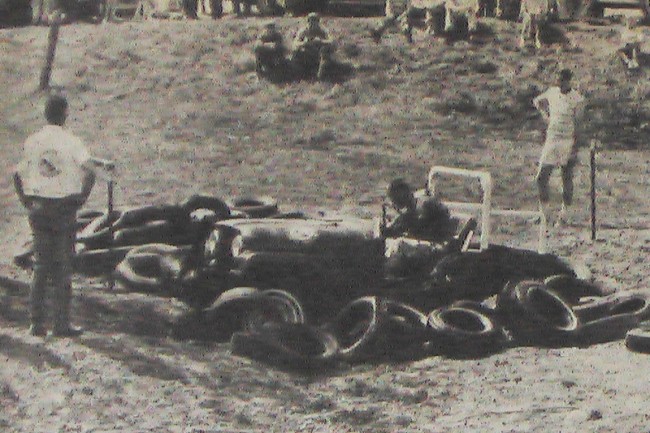
Obstacle Course: Still included in racing today, this course is a tight course, usually muddy, that racers try to get through as fast as possible. Below is an image of me after an obstacle course at the ORV Park Near Olympia during the 1985 Summer Convention.
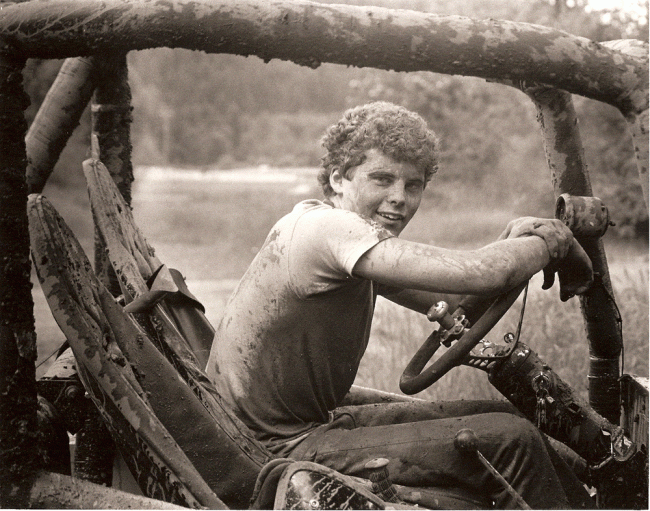
Team Relay: This has been and continues to be a traditional end of the playday/summer convention race. It involves four teams of four jeeps and four drivers on one course. The object is to get all four drivers around the course one time. Each team is assigned a colored flag to make it easy to identify the teams while they are racing. The top two teams to finish a round advance to the next round. The team that wins the final round wins a trophy.
When I last raced, this event would take the entire day. There were many, many teams and people. It’s a fun event to participate in and watch.
The first time I ever ran this event (March 1985 on a cold weekend north of Everett), I broke the front driveline in my jeep in the first round, I broke the front driveline in Tim Carter’s race jeep Priority (version 1) in the second round, and I thought I had broke the front driveline of Jim Carter’s jeep Otis in the 3rd round (we lost, so we didn’t advance after that — and I was relieved!), but fortunately I didn’t break it. I have never broken a driveline since. Weird ….
Other events not shown:
Water Course: The object is to get around the course the quickest without spilling water held in a cup by a passenger. It’s a slow, but comical race. A derivation of this involves an egg; if I remember correctly, the passenger carries a spoon, on which they balance an egg through the course. If the egg falls off, they have to stop and can’t start forward again until the egg is back on the spoon.
Tonka Course: Kids put strings on their Tonka vehicles and pull them as they run through a course. There were other kid-specific courses that I don’t remember.
Backwards: The racer drives a course forward to a stopping point, then has to drive the course in reverse as fast as possible.
The Divorce Course: The driver is blindfolded. The passenger must tell the driver how to drive the course.
Cross Country Course: This is still in racing today and is a faster, longer course designed for faster speeds.
Hill Climbs: Self Explanatory. I haven’t seen one of these in a long time, but they got held occasionally. A derivation, based on the newspaper article above, is the chain hill. In this event, climbers put chains on their jeeps and try to climb hills. However, these hill climbs do not compare to those crazy Finnish Hill Climbers.
Drags: Self Explanatory.
King and Queen: This race is still run today. I’m not exactly sure when this was first run. If I understand correctly, this is an elimination race where 2 racers compete against one another. One racer starts on one half of the track and one on the other. Each racer completes the entire track. The first one to complete the race advances to the next round. The man that wins the final round is King and the woman that wins her final round it Queen.
Sprints: You can still find this racing occasionally (Here are some pics from earlier this year). This is head-to-head competition where a group of racers have to race a certain number of laps on a course. I never saw this at a playday, but did watch the Yakima Mud Races with were sprints in mud.
Top Eliminator: Only the fastest winners in certain events (such as the fastest cumulative times in the obstacle, cross country and barrel races for example) race in this race. There are no separate classes. The winner is the top racer (male and female brackets) for the weekend. The race track is usually a tighter version of a cross country course.

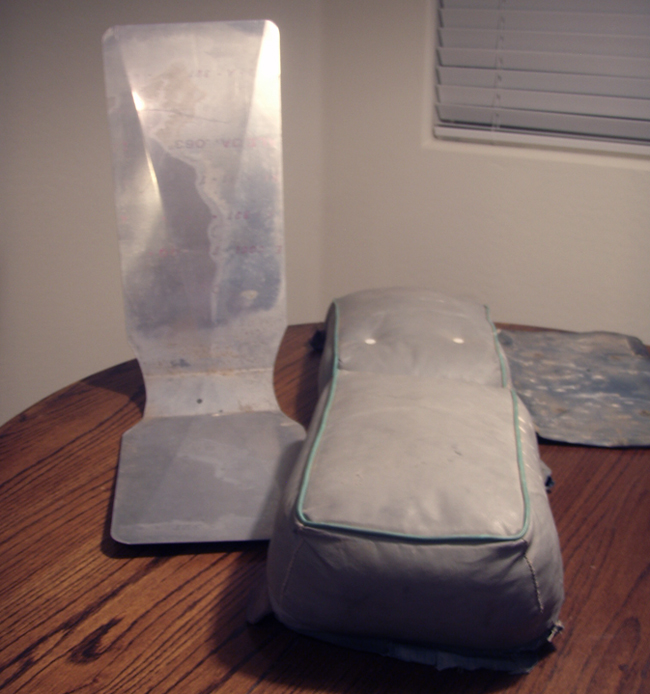


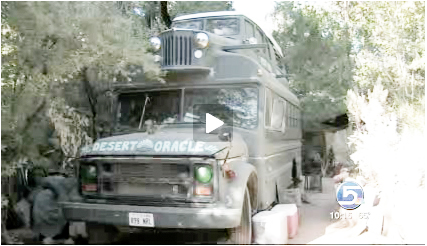


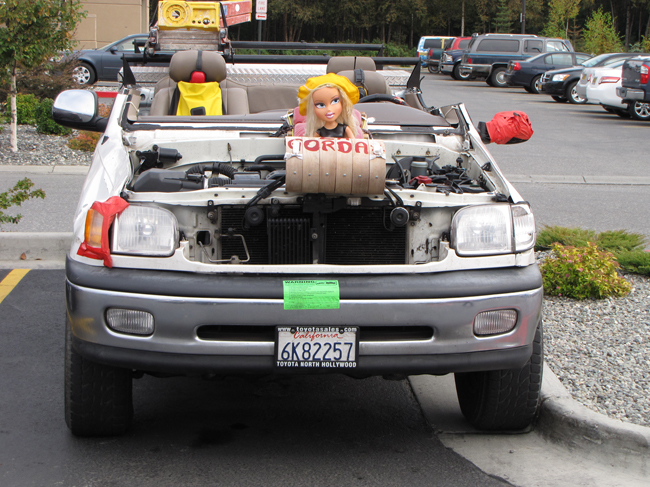
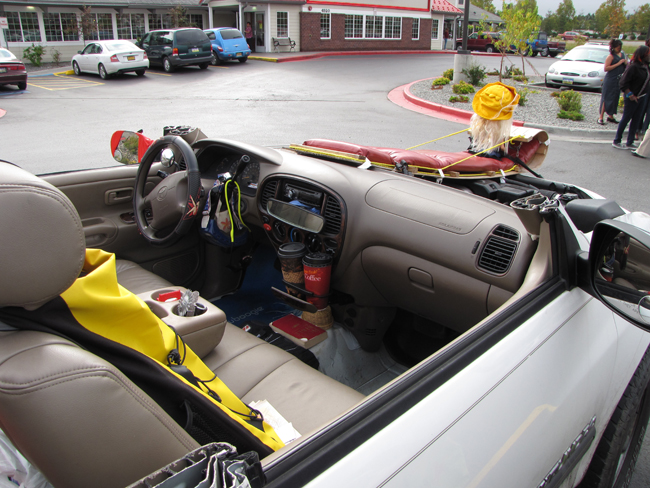
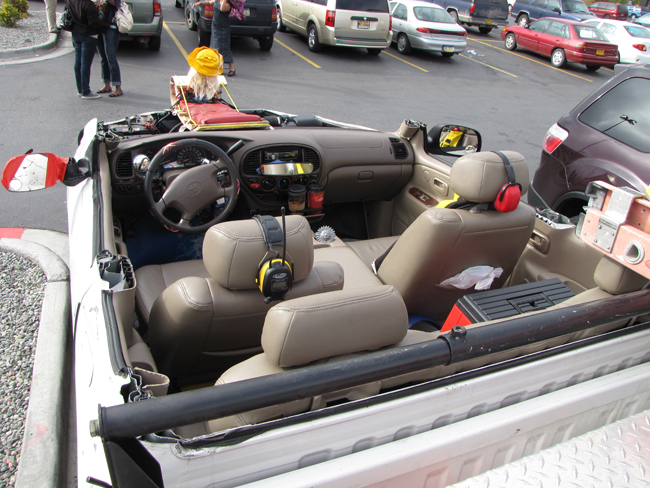
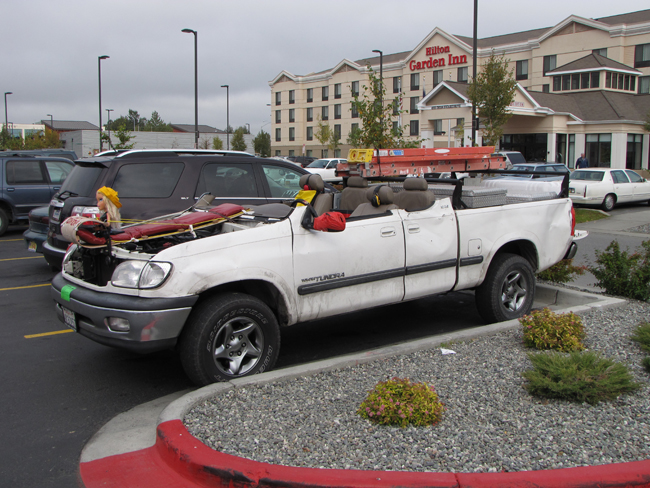

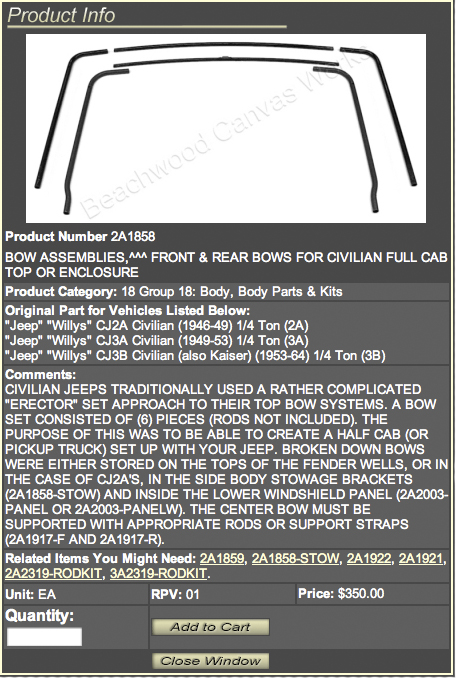
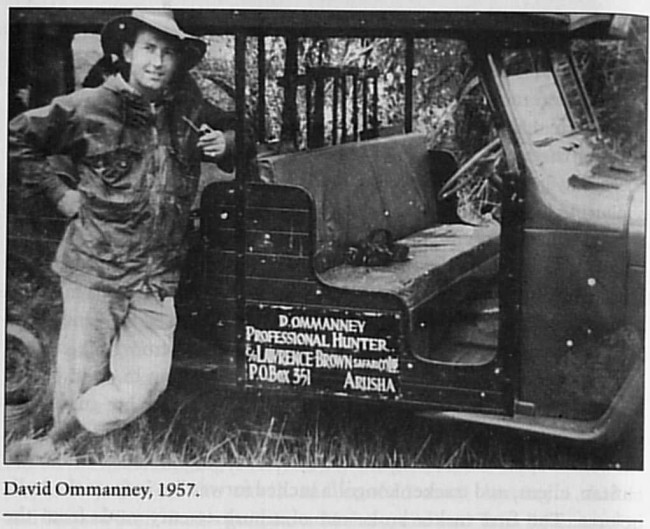

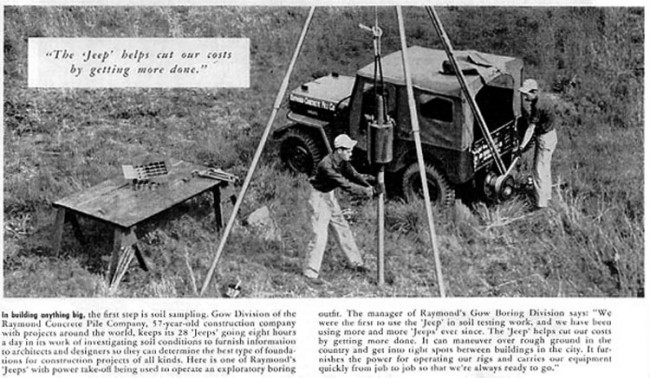
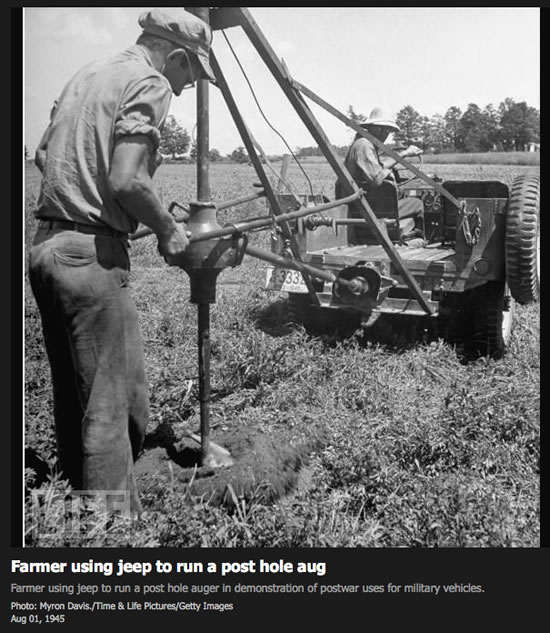
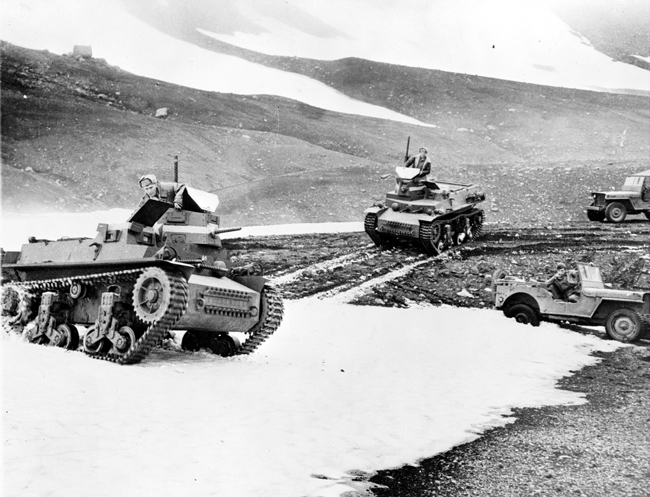
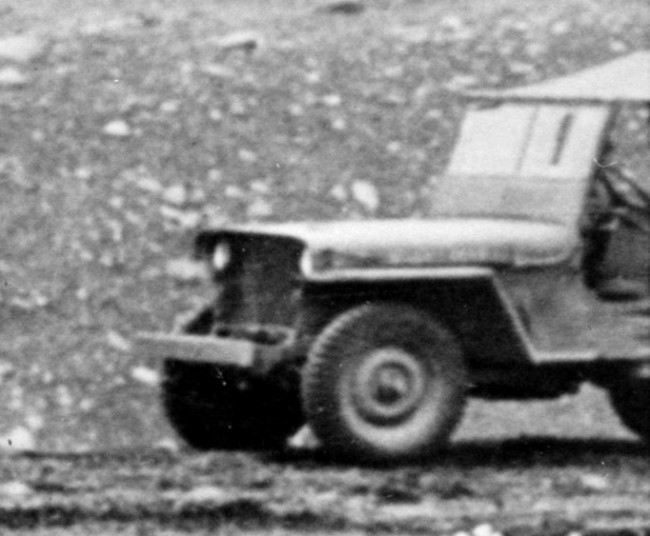
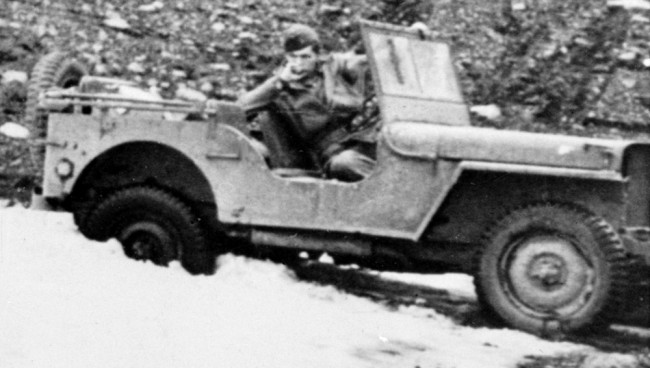
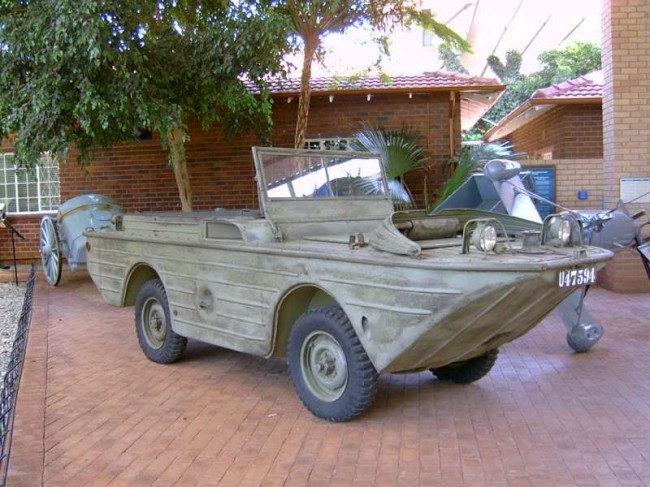
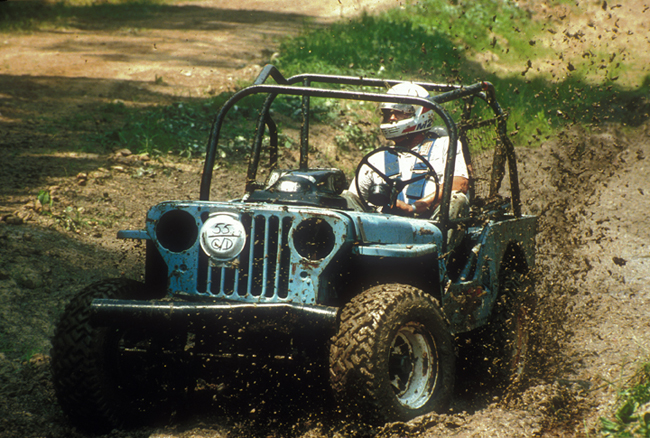
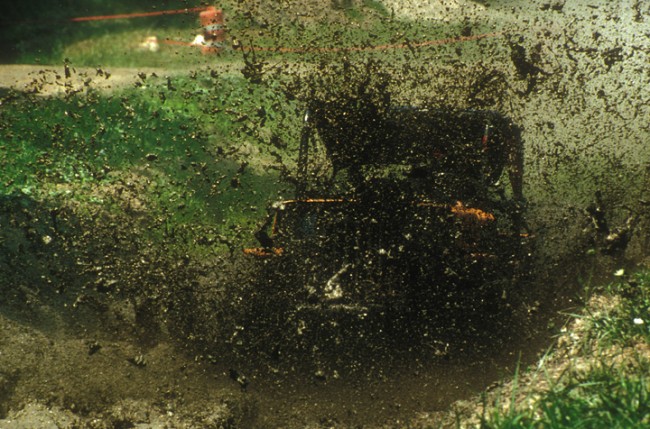
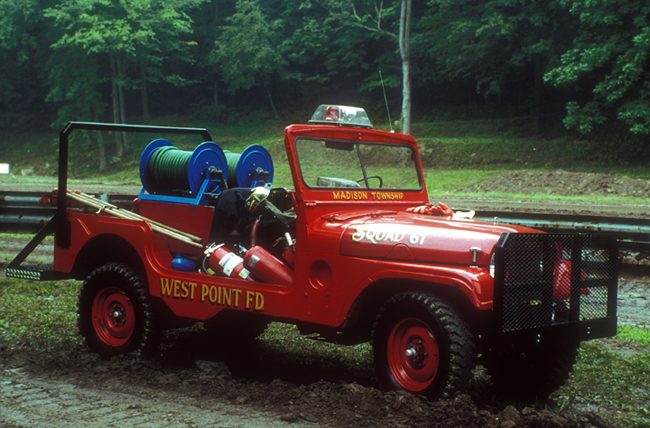
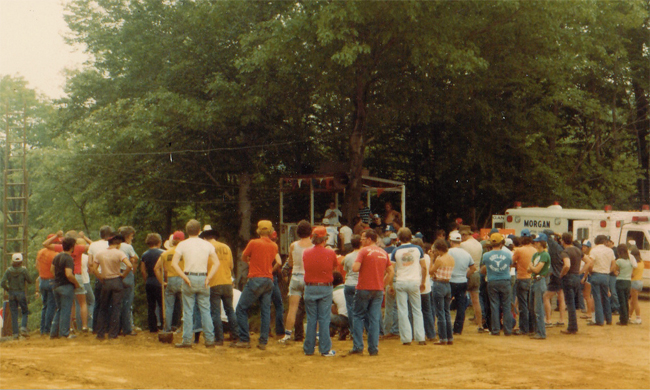

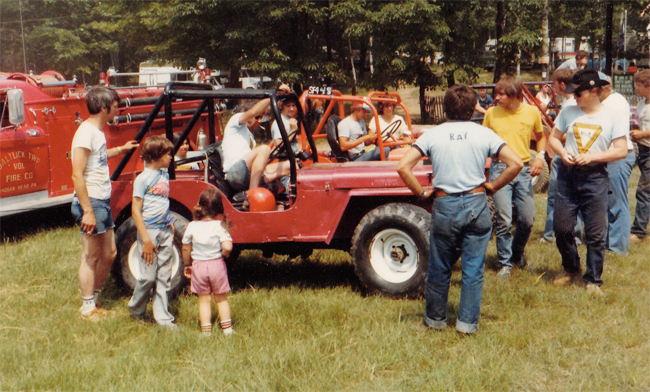
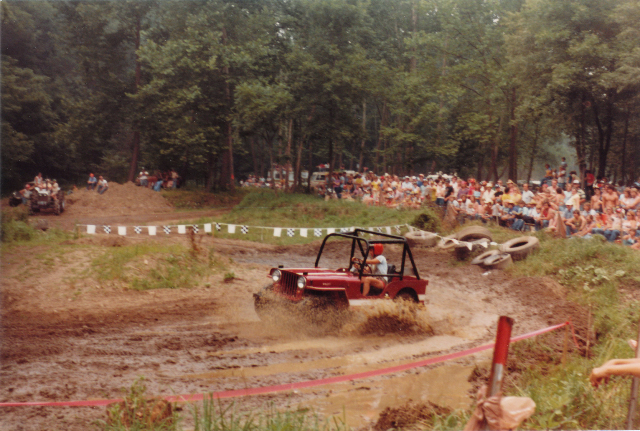
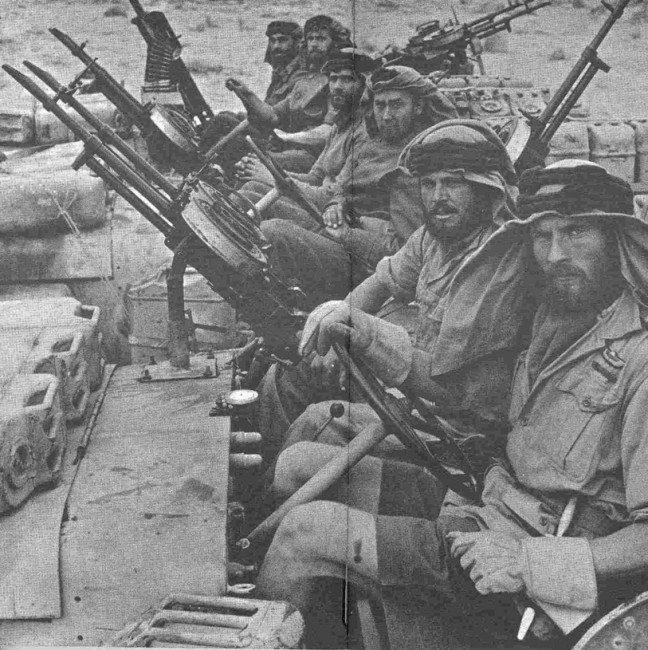

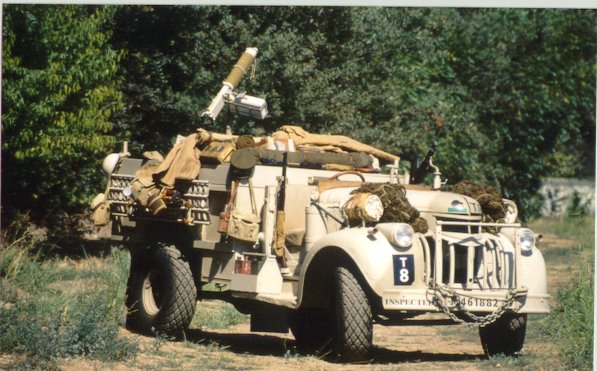
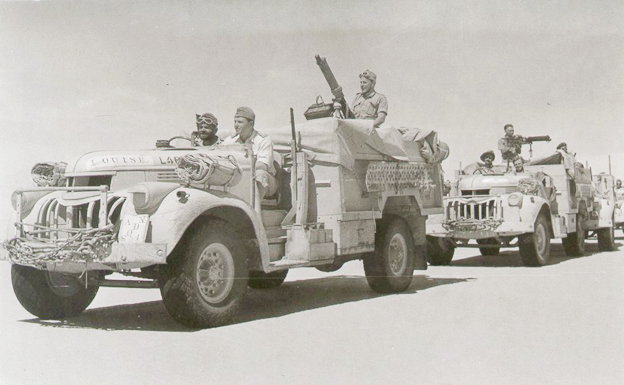
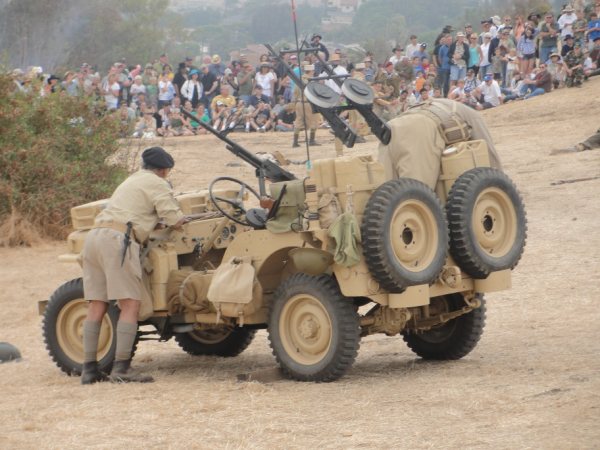
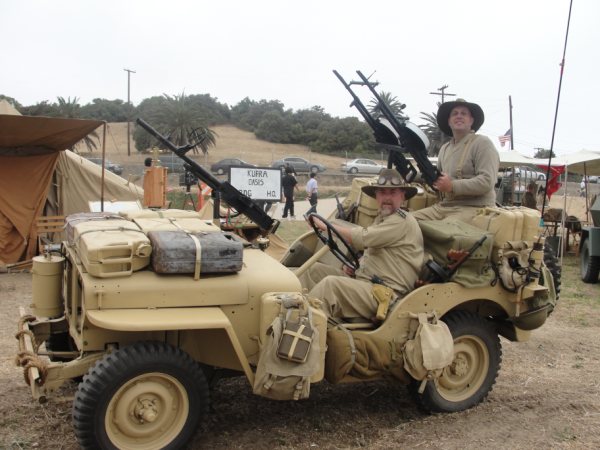
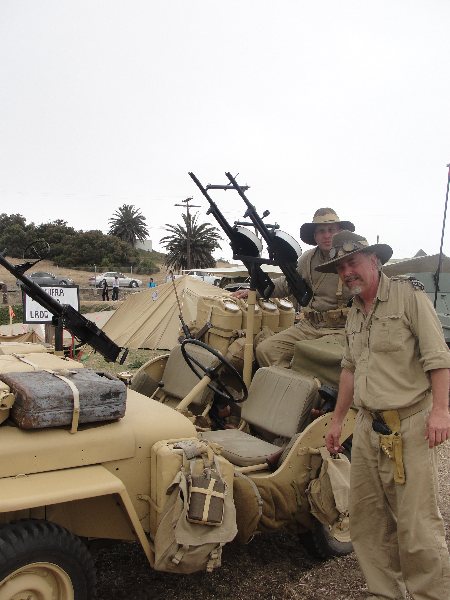


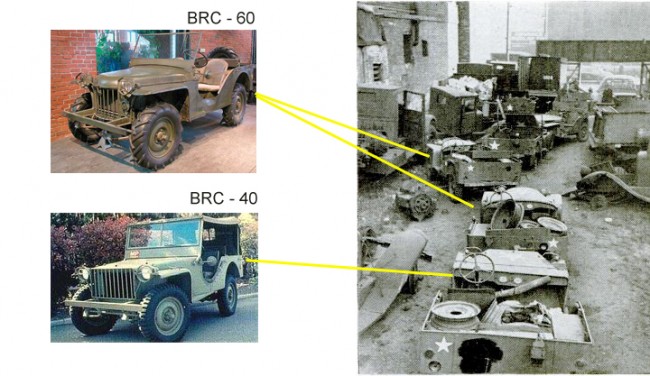
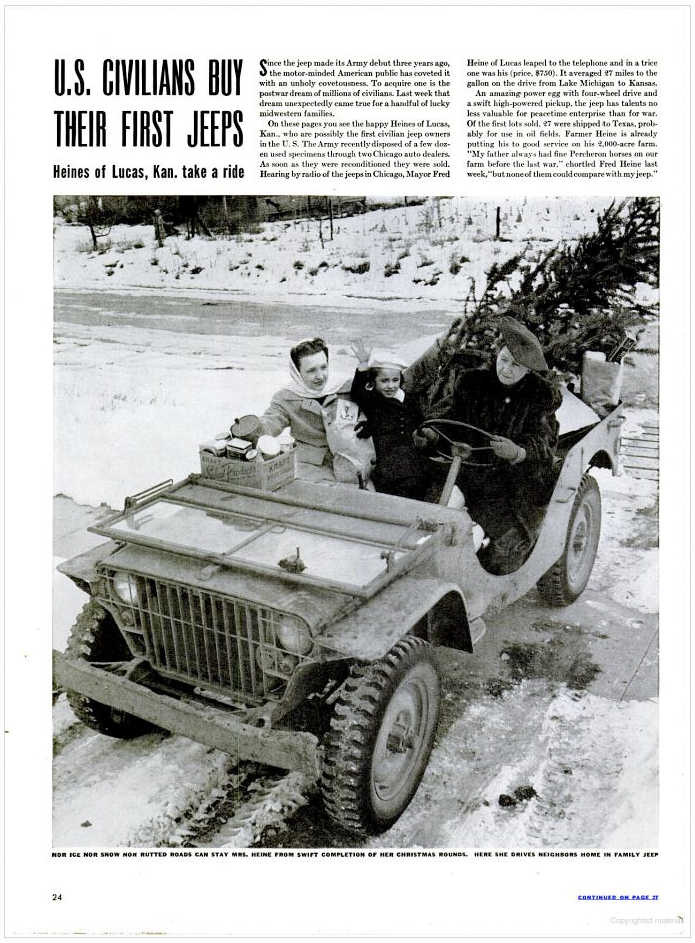
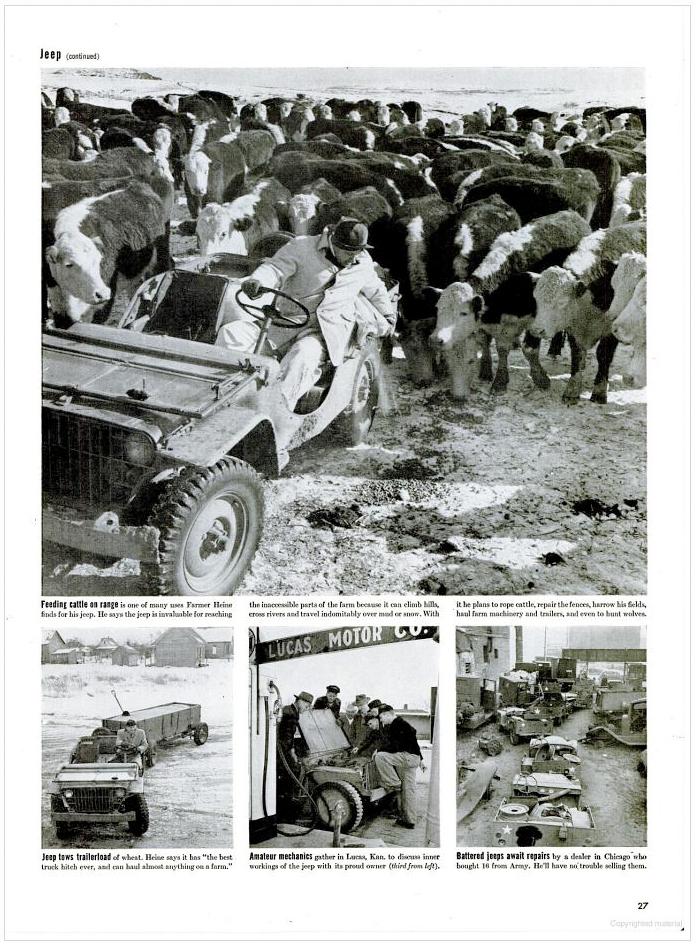
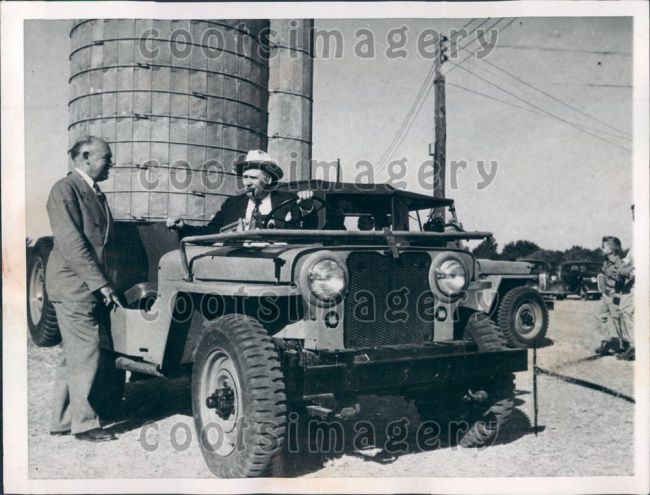
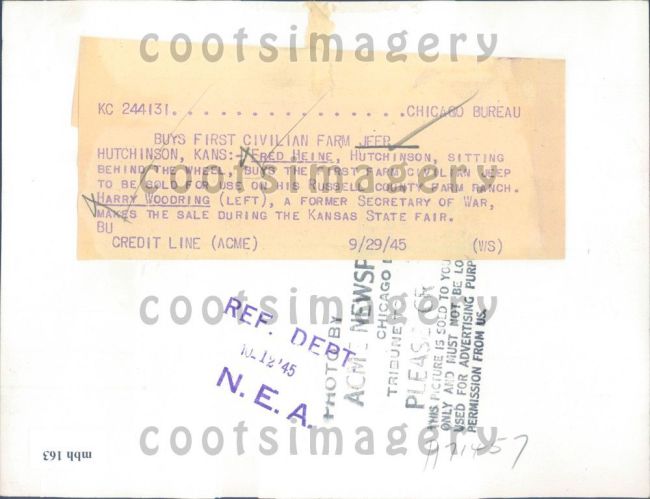
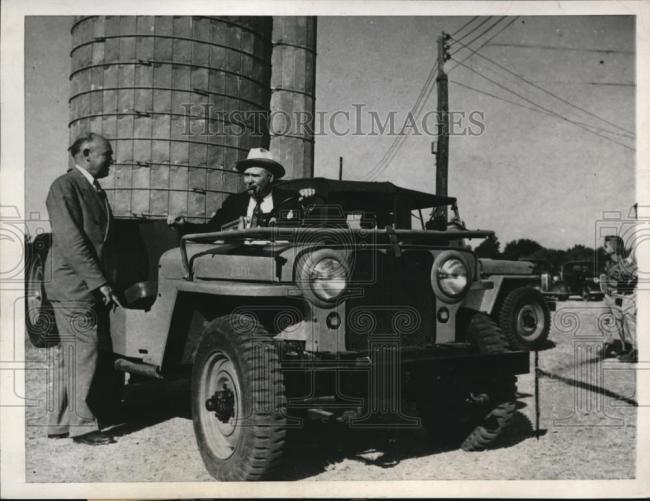
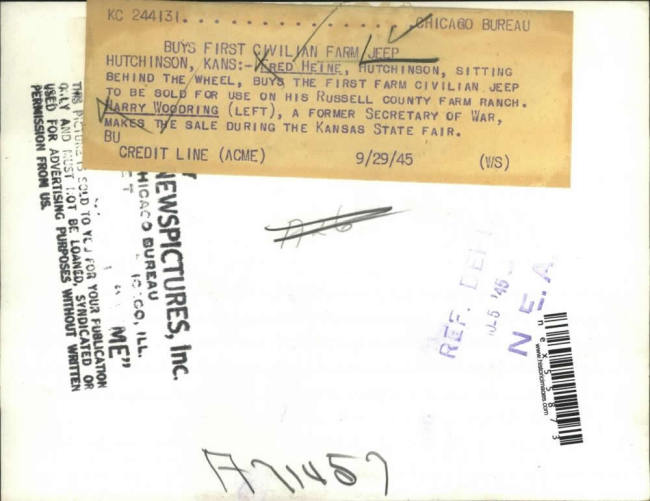











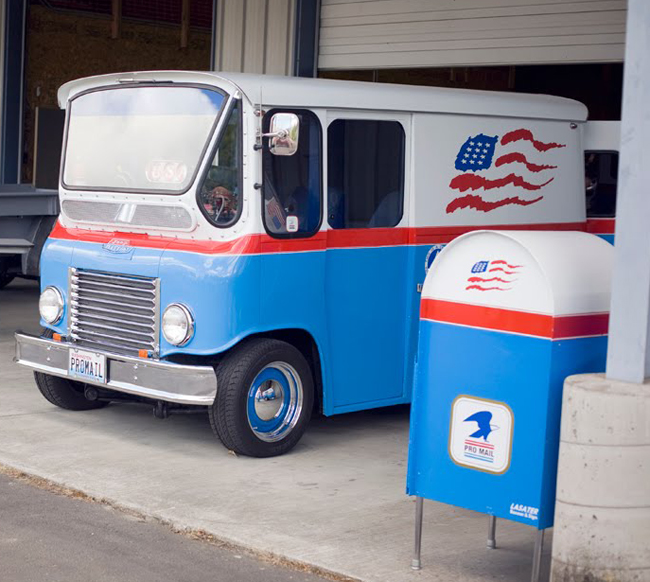

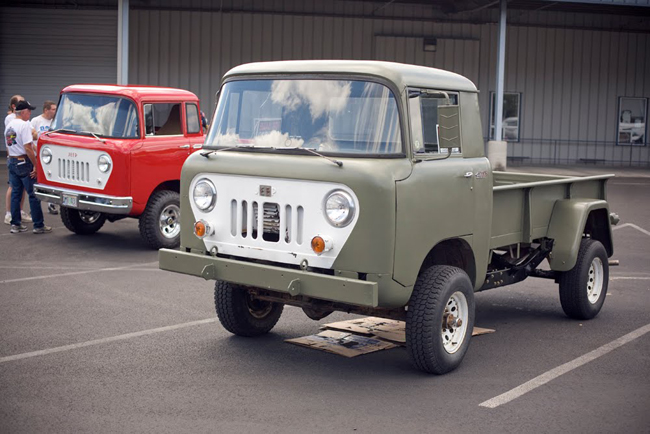
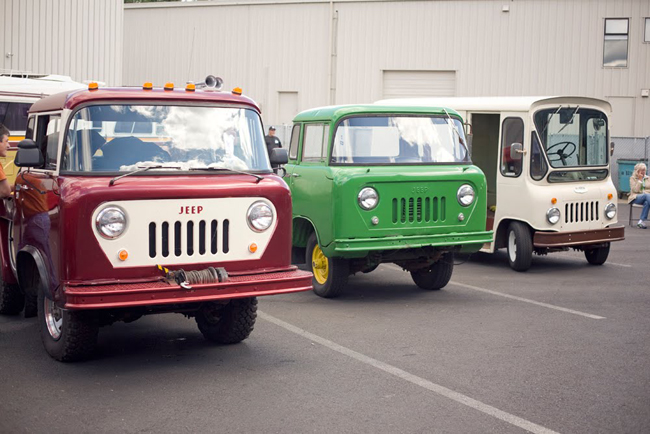
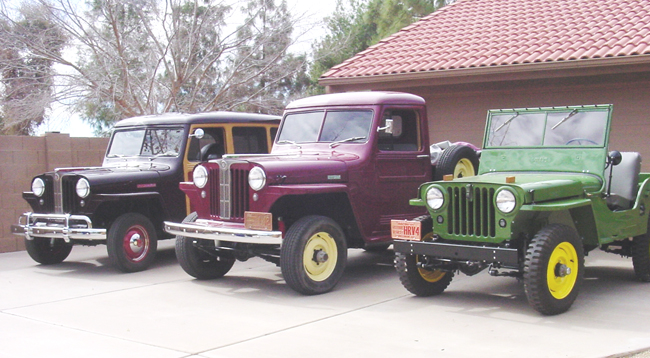
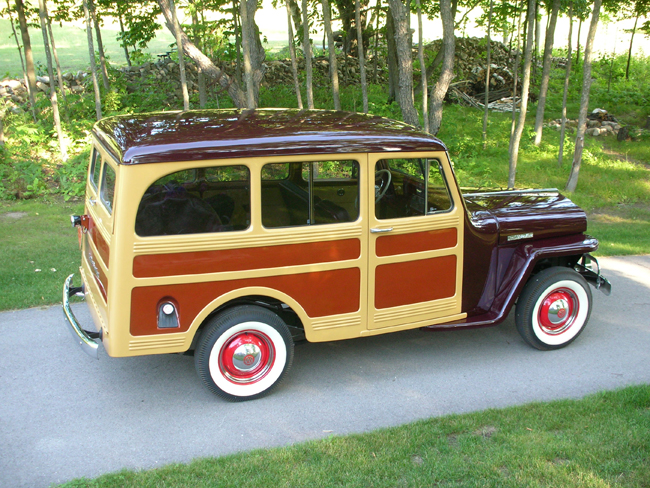

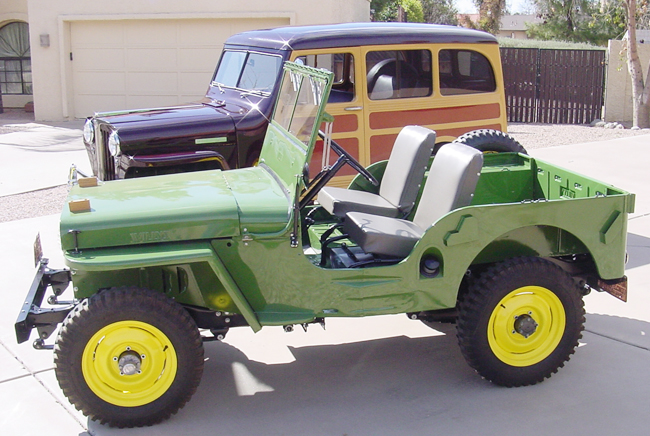
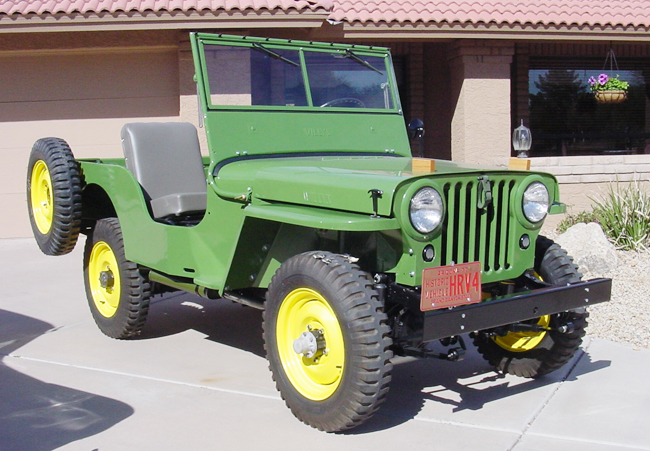
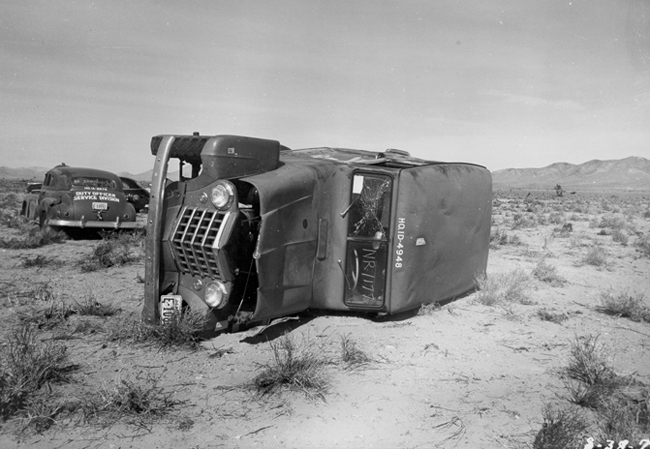
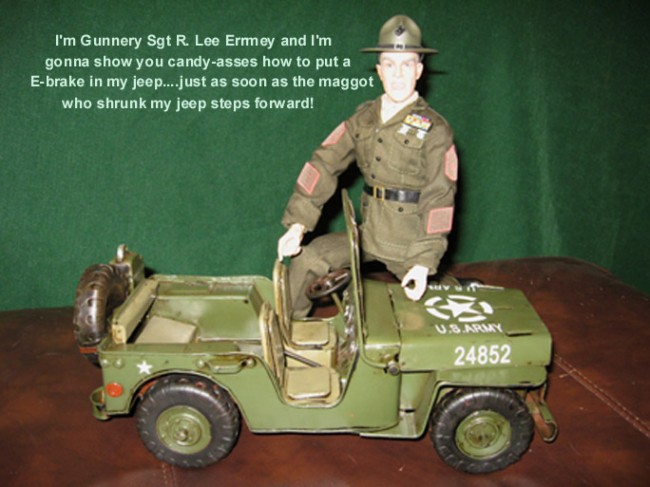
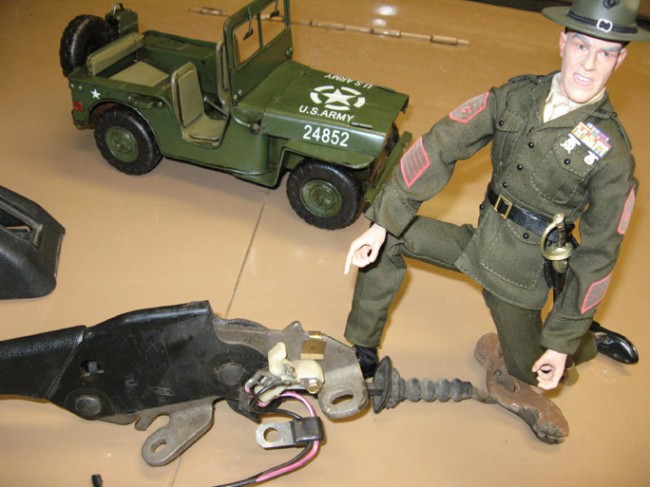
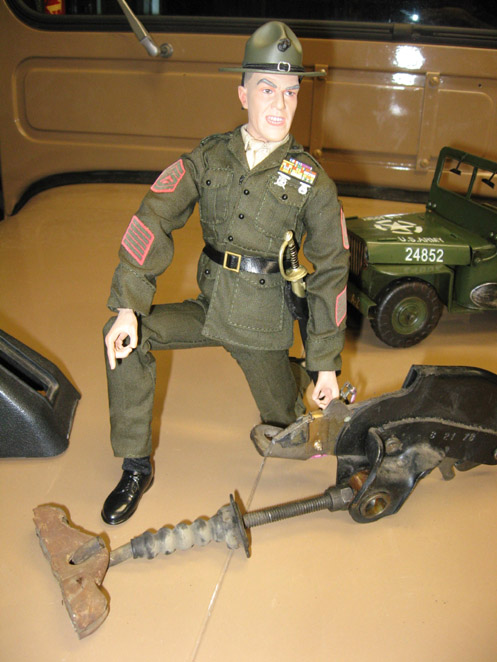
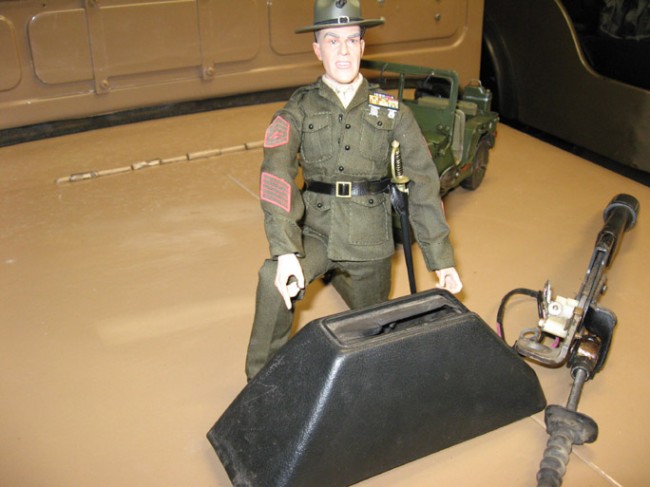
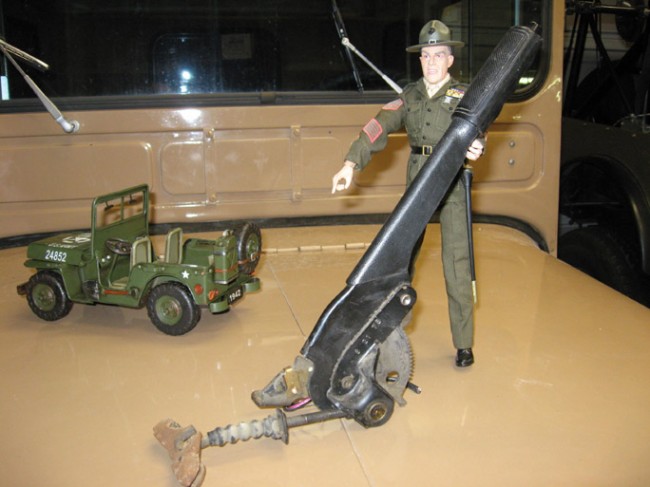
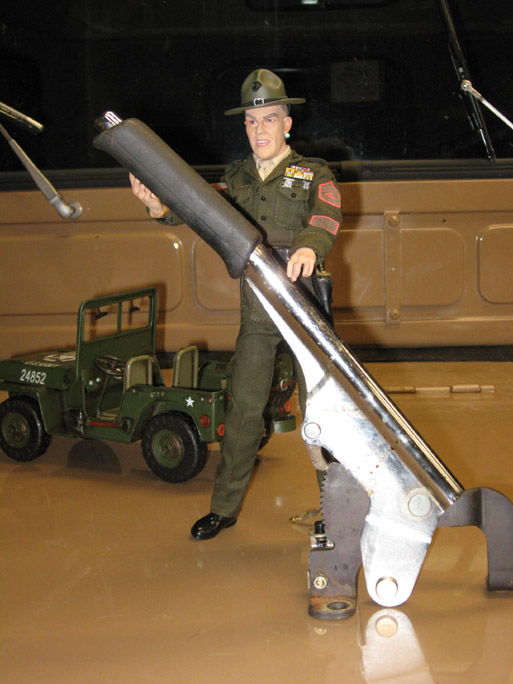
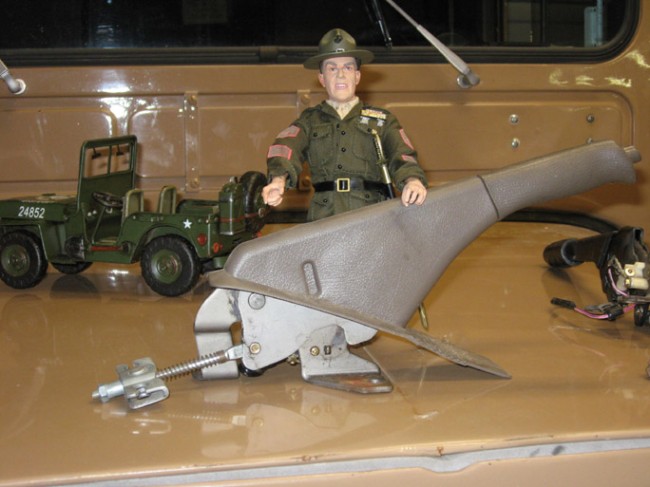
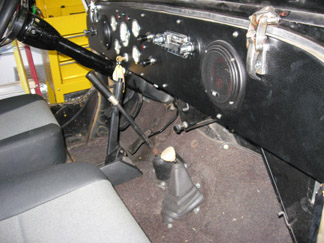
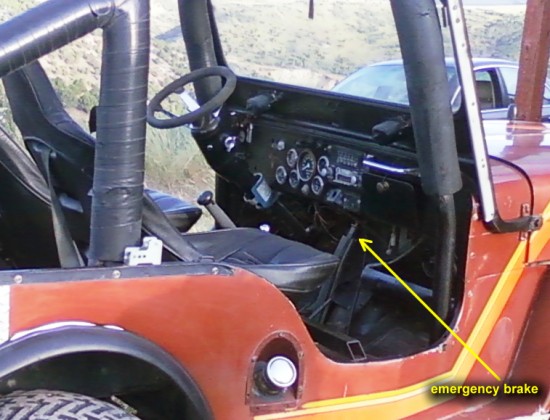

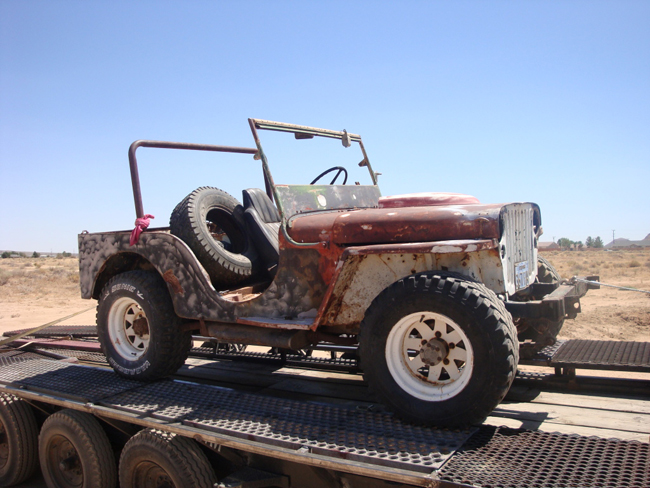
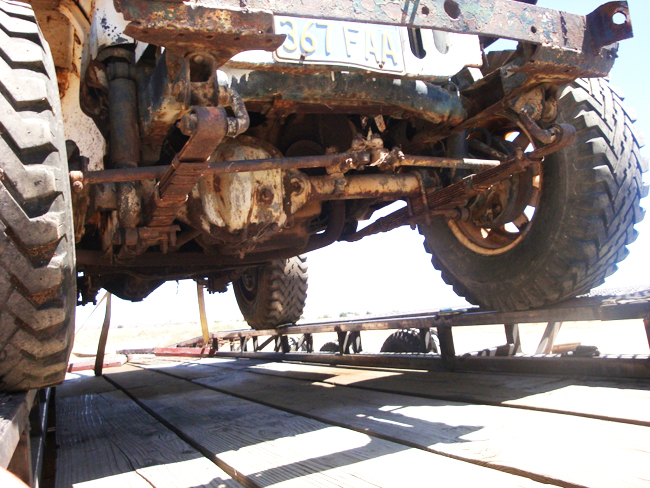
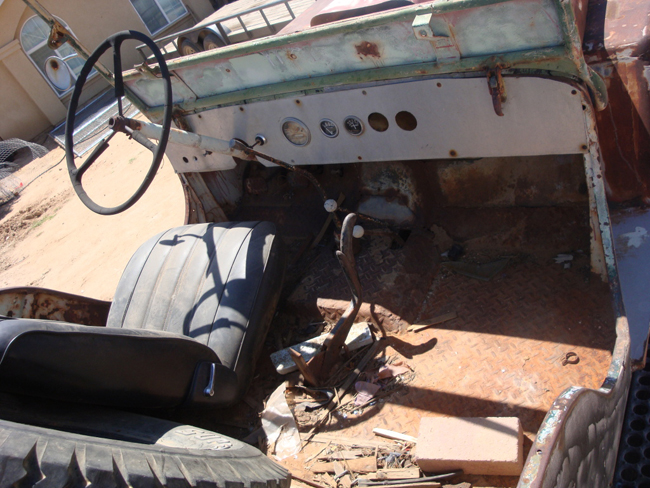
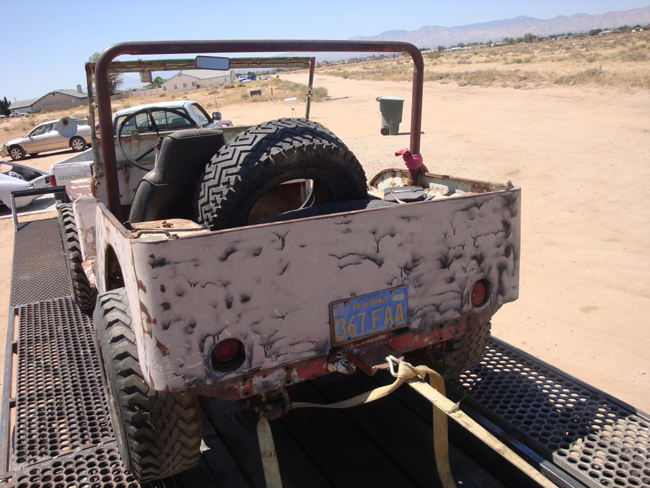
 These 2 jeeps offer clues but also leaves one with more questions. The extended tub, tailgate, baby moon hubcaps, valance panels, and an absence of chrome bumpers. Also, there was no date stamp on the card, but it looks to be from the late/early 50-60s.
These 2 jeeps offer clues but also leaves one with more questions. The extended tub, tailgate, baby moon hubcaps, valance panels, and an absence of chrome bumpers. Also, there was no date stamp on the card, but it looks to be from the late/early 50-60s.